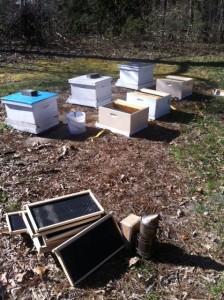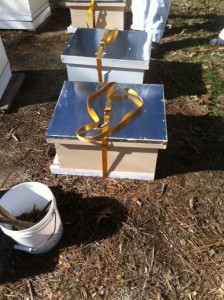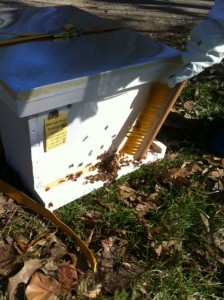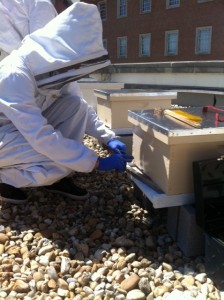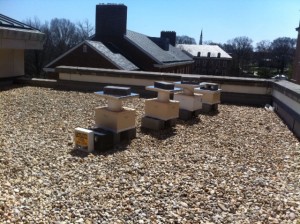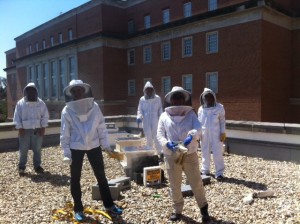Sadly we lost 2 of our three rooftop colonies this winter, and the third is very weak. So we decided to establish some new colonies as replacements.
Usually when you are starting new colonies in the spring you buy packages, or nucs, but this year Bart Smith from the USDA generously offered us three of his new hives that he had established from packages a few weeks earlier.
We brought our hive bodies over to the USDA, and removed 3-5 new frames from our hives to make room for the 3-5 frames of bees from the established hives. We also blocked the entrances of our hives with wooden dowels so the bees would not escape during transport. To our surprise one of the packages had already expanded to about 8 frames!
Bart Smith Removing frames from his hives and putting them in ours.
Once the bees were inside our hives, we placed the inner cover and the lid on the hive body, and then secured everything in place with ratchet straps. The ratchet straps held the pieces of the hive together very tightly so that it could be picked up and transferred as a unit without any bees escaping.
Bees that didn’t get put into the hive with the frame had to be brushed off the hives, and then they were ready for transport!
We drove the bees right over to UMD, and loaded them on a cart to take to the roof.Once on the roof we situated the cinder blocks for the hives to sit on, and removed the ratchet straps.
We put on gallon bucket feeders filled with sugar syrup, and removed the wooden dowels from the hive entrances.
Finally we removed a brood frame from the largest hive we acquired and put it in our only remaining hive from last year to try and save it.
Our fabulous team of beekeepers! From left: Andrew Garavito, Rachel Bozarth, Tyler Connine, Meghan McConnell, and Katie Reding.
-Grace
